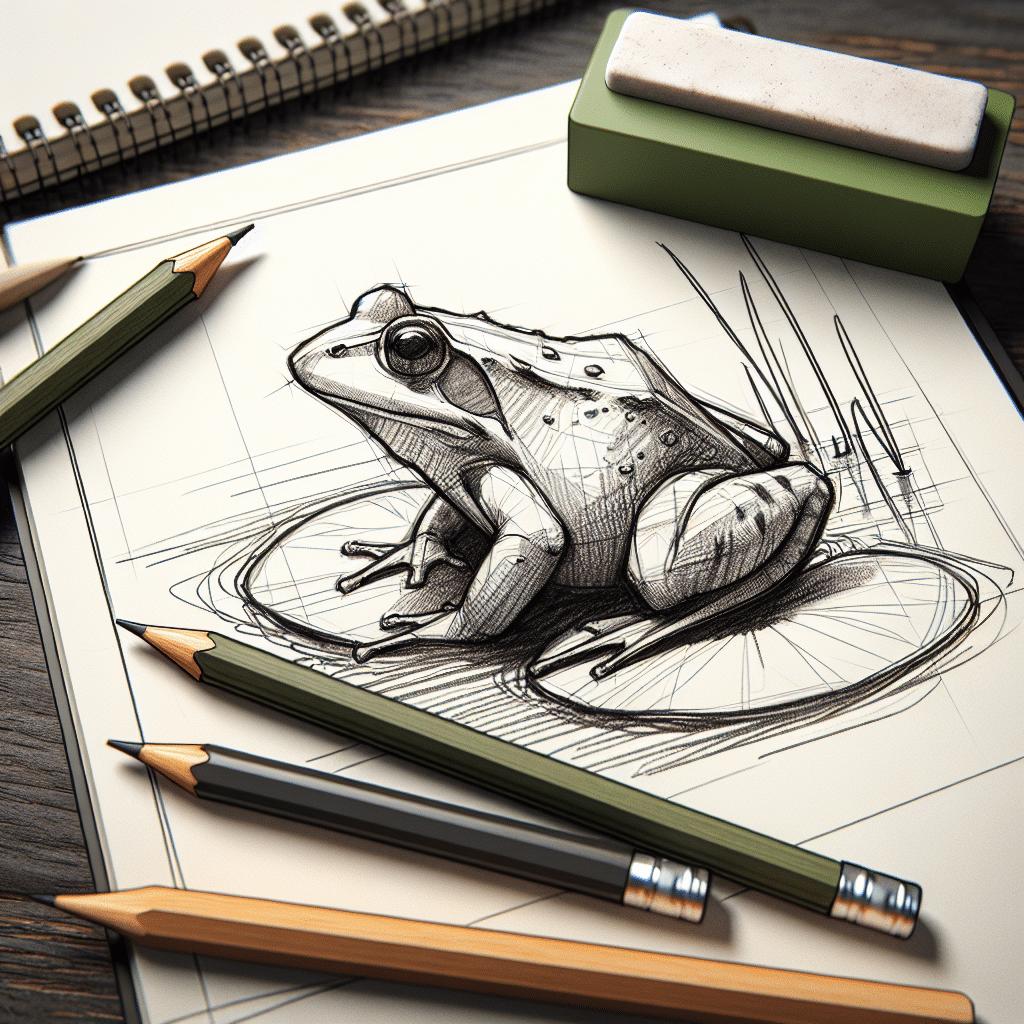Are you scared of frogs? Well, fear not because we have the ultimate guide to help you conquer your fear! In this comprehensive fear-busting guide, we will explore everything you need to know about overcoming frog phobia. From understanding why you’re afraid of these slimy creatures to practical tips on how to gradually face your fear, we’ve got you covered. Get ready to hop on a journey of self-discovery and empowerment as we take you on a thrilling adventure to overcome your frog phobia!

Understanding Frog Phobia
Defining frog phobia
Frog phobia, also known as ranidaphobia, is an excessive and irrational fear of frogs. People with frog phobia experience intense anxiety and discomfort when they encounter, see, or even think about frogs. This fear can be debilitating and may interfere with daily life activities.
Common fears associated with frogs
There are several common fears associated with frogs that contribute to frog phobia. Some people are afraid of the way frogs look, with their bulging eyes, slimy skin, and unusual body shape. Others are scared of the way frogs move, with their leaps and jumps. Additionally, the fear of being touched or bitten by a frog is a common fear associated with frog phobia.
Identifying the symptoms of frog phobia
People with frog phobia may experience various symptoms when they come into contact with frogs. These symptoms can include rapid heartbeat, shortness of breath, trembling, sweating, nausea, and a strong desire to flee the situation. They may also have intense feelings of dread or panic when thinking about frogs or even seeing pictures or videos of them.
Causes of Frog Phobia
Genetic factors
There is evidence to suggest that genetic factors can play a role in developing frog phobia. If a close family member, such as a parent or sibling, has a fear or phobia of frogs, there is a higher likelihood of developing the same fear.
Environmental factors
Environmental factors, such as upbringing and early experiences, can also contribute to the development of frog phobia. If a person has had negative experiences or witnessed others expressing fear or disgust towards frogs, they may adopt similar reactions and develop a phobia.
Traumatic experiences
A traumatic experience involving frogs, such as being startled or bitten by one, can trigger the development of frog phobia. These experiences create a strong association between fear and frogs in the person’s mind.

Psychological Implications of Frog Phobia
Effects on mental health
Frog phobia can have a significant impact on a person’s mental health. The fear and anxiety associated with the phobia can lead to feelings of helplessness, low self-esteem, and even depression. It may also limit the person’s ability to engage in activities or visit places where frogs are commonly found.
Impact on social life
Frog phobia can also affect a person’s social life. They may avoid social gatherings or outdoor activities where they might encounter frogs. This avoidance behavior can lead to feelings of isolation and may strain relationships with friends and family members.
Connection to other fears or phobias
Frog phobia is often associated with other fears or phobias. Some individuals may have a general fear of small animals or insects, which can extend to frogs. Others may have a fear of water, as frogs are often found near bodies of water. Understanding these connections can help in addressing the root causes of the phobia.
Facts about Frogs
Understanding frog behavior
To overcome frog phobia, it is important to learn about frogs and understand their behavior. Frogs are amphibians and play a crucial role in ecosystems as both predators and prey. They have unique life cycles, starting as tadpoles and transforming into adults. Learning about these fascinating facts can help dispel misconceptions and alleviate fears.
Debunking common frog myths
There are many myths and misconceptions surrounding frogs that contribute to fear and phobia. One common myth is that all frogs are poisonous. In reality, only a small percentage of frog species produce toxins, and most frogs are harmless to humans. Educating oneself about the truth behind these myths can help reduce fear and anxiety.
Safety around frogs
It is essential to learn about safe interactions with frogs. Frogs are generally harmless and avoid human contact. By understanding their natural behavior and practicing basic safety precautions, such as not approaching or touching frogs in the wild, one can ensure their own safety and reduce anxiety when encountering these creatures.

Self-help Strategies for Overcoming Frog Phobia
Exposure therapy methods
Exposure therapy is a common technique used to treat frog phobia. Gradual and controlled exposure to frogs, starting from pictures and videos and progressing to real-life encounters, can help desensitize individuals to their fears. This method allows the person to gradually build confidence and overcome their phobia over time.
Relaxation techniques
Relaxation techniques, such as deep breathing and progressive muscle relaxation, can be helpful in managing anxiety associated with frog phobia. These techniques help calm the body and mind, reducing the physical and emotional symptoms experienced during encounters with frogs.
Positive affirmations
Positive affirmations are statements that can help challenge negative thoughts and beliefs associated with frog phobia. By repeating affirmations such as “I am in control of my fear” or “I am brave and capable,” individuals can build confidence and change their perception of frogs from fear-inducing to manageable.
Changing perception about frogs
It is important to change the perception about frogs and reframe negative thoughts associated with them. Recognizing the ecological importance of frogs and appreciating their unique characteristics can help develop a more positive attitude towards these creatures. Seeking out educational resources and information about frogs can aid in this process.
Professional Treatment Options for Frog Phobia
Cognitive Behavioral Therapy (CBT)
Cognitive Behavioral Therapy, or CBT, is a commonly used therapeutic approach for treating frog phobia. This type of therapy focuses on identifying and challenging negative thoughts and beliefs related to frogs. Through guided conversations and exposure exercises, individuals can learn to reframe their fears and develop healthier coping strategies.
Hypnotherapy
Hypnotherapy is an alternative treatment option for frog phobia. This therapy involves using relaxation techniques and guided imagery to help individuals access their subconscious mind and address the root causes of their fear. Hypnotherapy can aid in reprogramming negative associations and creating positive changes in perception.
Medication
In some cases, medication may be prescribed to manage the symptoms of frog phobia. Anti-anxiety medications or beta-blockers may be used to alleviate anxiety and reduce physical symptoms associated with encounters or thoughts of frogs. It is important to consult with a healthcare professional to determine if medication is an appropriate option.
Virtual reality therapy
Virtual reality therapy is an emerging treatment method for frog phobia. This technique involves using virtual reality simulations to expose individuals to realistic frog encounters in a controlled environment. The immersive experience allows for gradual exposure and provides a safe space for individuals to confront and overcome their fears.
Role of Support Networks in Managing Frog Phobia
Importance of family and friends
Having support from family and friends is crucial in managing frog phobia. Loved ones can provide encouragement, understanding, and assistance during the process of overcoming the phobia. Their presence and support can make a significant difference in building confidence and resilience.
Joining support groups
Support groups specifically for individuals with frog phobia can be beneficial in connecting with others who share similar experiences. These groups provide a platform for sharing stories, seeking advice, and learning from others’ strategies and successes in managing their fear. Online forums and local community organizations may offer support group options.
Sharing experiences in forums
Engaging in online forums or discussion platforms focused on frog phobia can be helpful in sharing experiences and finding empathy. Connecting with others who understand the challenges of living with frog phobia can provide a sense of belonging and reassurance that one is not alone in their struggle.
Tips for Parents of Children with Frog Phobia
Helping your child understand their fear
As a parent, it is important to help your child understand their fear of frogs in a supportive and gentle manner. Explaining that fear is a normal emotion and discussing the reasons behind their fear can help them feel validated and less alone. Encouraging open communication helps create a safe space for them to express their concerns and ask questions.
Teaching safe interactions with frogs
Teaching children about safe interactions with frogs is essential in managing their fear. Educate them about the natural behavior of frogs, emphasize the importance of not harming or touching them, and demonstrate how to observe frogs from a safe distance. Encourage them to ask questions and openly discuss any concerns they may have.
Working with school staff
If your child’s frog phobia significantly impacts their school life, it is important to work with school staff to create a supportive environment. Educate teachers about your child’s fear, discuss any necessary accommodations, and explore opportunities for gradual exposure to frogs in a controlled setting. Collaboration between home and school can facilitate a positive learning experience for your child.
Long-term Management of Frog Phobia
Maintaining progress
Once significant progress has been made in overcoming frog phobia, it is essential to continue practicing and maintaining the learned strategies. Regularly reviewing positive affirmations, engaging in exposure exercises, and seeking out opportunities to interact with frogs in a safe and controlled manner can help reinforce progress and prevent relapse.
Dealing with setbacks
Setbacks can occur during the process of overcoming frog phobia, and it is important to approach them with patience and understanding. Encourage yourself or your child to reflect on the progress made thus far and remind them that setbacks are a normal part of the journey. Seek support from loved ones or professionals, and continue working towards overcoming the fear.
Prevention techniques
To prevent a relapse of frog phobia, it is important to continue practicing prevention techniques even after significant progress has been made. These techniques can include regularly exposing oneself to frogs, participating in frog-related activities, or engaging in discussions about frogs. By maintaining a positive and proactive approach, fear of frogs can be effectively managed in the long term.
Changing Society s Perception of Frog Phobia
Normalizing fear discussions
To change society’s perception of frog phobia, it is important to normalize discussions about fears and phobias in general. By openly talking about and acknowledging different fears, including frog phobia, we can create an environment that encourages empathy, understanding, and support for individuals struggling with these fears.
Encouraging empathy towards phobia sufferers
Empathy plays a crucial role in changing society’s perception of frog phobia. By educating others about the challenges faced by individuals with the phobia, we can foster a greater sense of understanding and compassion. Encouraging empathy can help reduce stigma and create a more inclusive and supportive society.
Advocating for accessible treatments
Promoting awareness and advocating for accessible treatments is essential in changing society’s perception of frog phobia. By raising awareness about available treatment options, such as cognitive behavioral therapy or hypnotherapy, we can help individuals with frog phobia access the support they need to overcome their fear. Increased understanding and acceptance can contribute to a more inclusive society for those with phobias.



